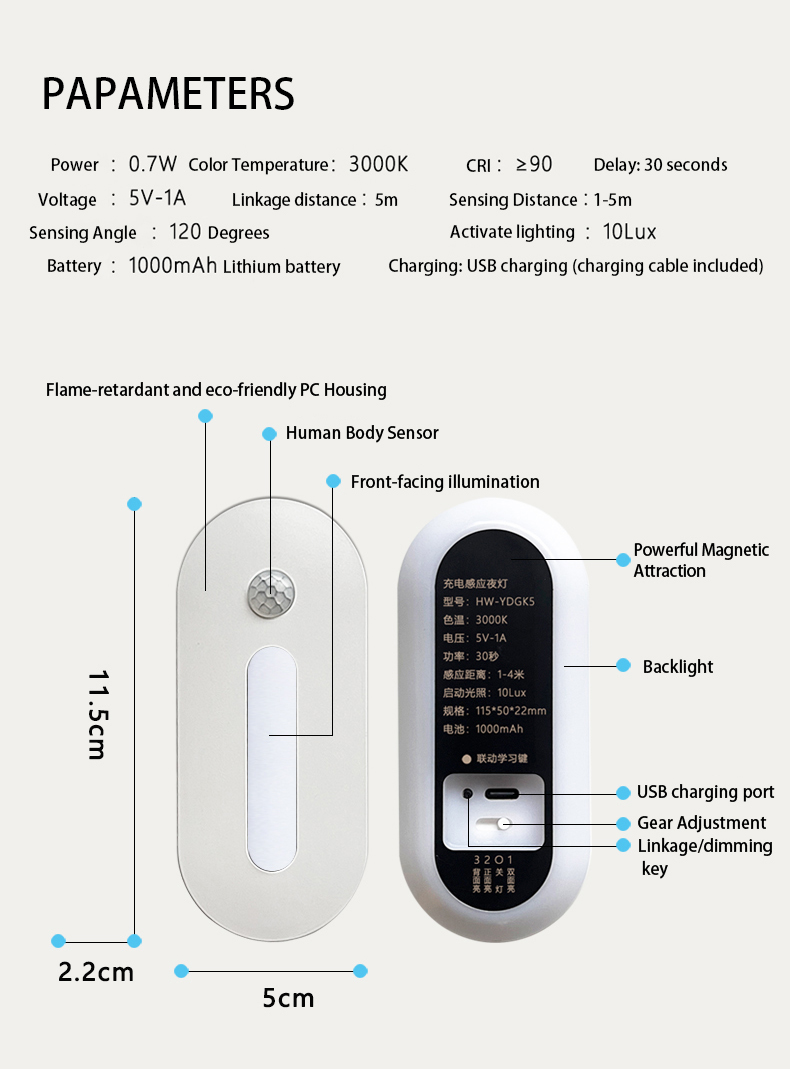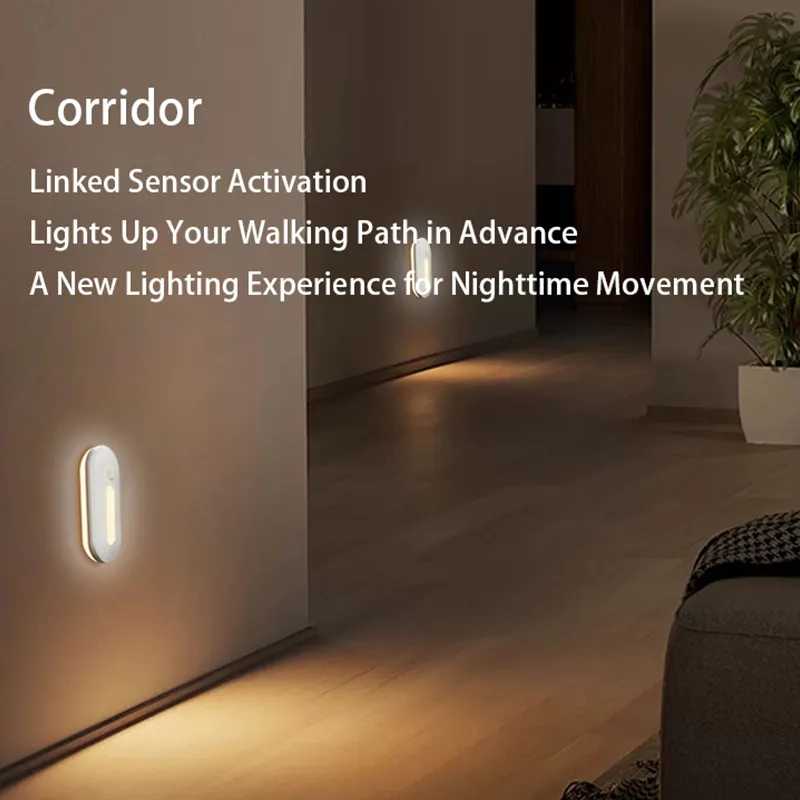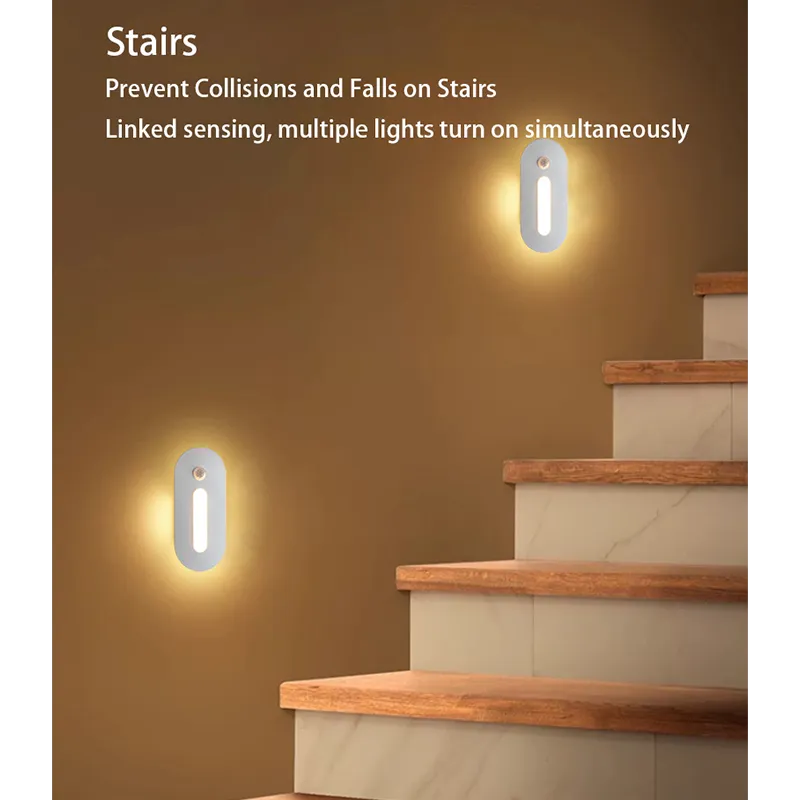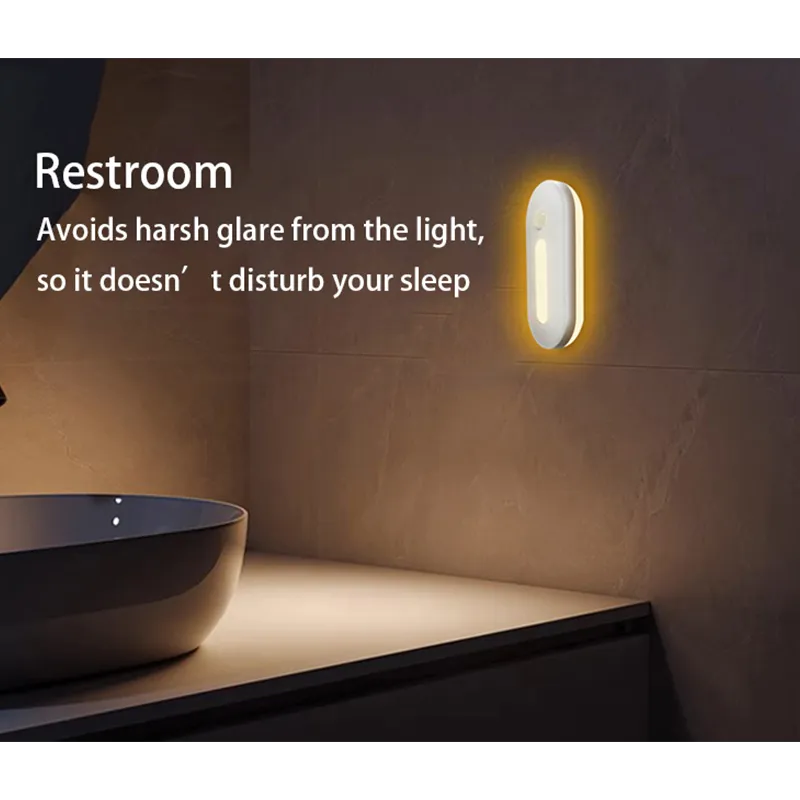Can cats trigger an automatic nightlight?
Automatic nightlights are designed to provide convenience, especially when lighting is needed at night. These lights use built-in sensors to detect motion or changes in the surrounding environment, automatically turning them on and off, eliminating the need for manual on/off switches. Automatic nightlights are not only used in bedrooms, hallways, and stairways, but are also widely used in kitchens, bathrooms, and storage rooms, providing users with a safer and more convenient lighting environment.
However, with the presence of pets, especially cats, many pet owners have begun to raise a question: Can cats trigger automatic nightlights?

What are automatic nightlights?
Automatic nightlights typically use motion sensors, which use infrared technology (pyroelectric infrared sensors) or ultrasonic sensors to detect the movement of objects or people in the surrounding environment. Once motion or heat changes are detected within a certain range, the light automatically turns on. Once the sensor no longer senses motion, the light automatically turns off, significantly improving energy efficiency.
1. Infrared Sensors
Infrared sensors are the most common type of automatic sensing technology. It primarily detects the presence of objects by detecting changes in heat. Human body temperature is typically around 37°C, while a cat's body temperature is approximately 38 to 39°C. Therefore, under normal circumstances, an infrared sensor should be able to detect the presence of a cat. The sensor analyzes temperature fluctuations in the environment to determine whether to activate the light.
2. Ultrasonic Sensor
An ultrasonic sensor detects motion by emitting high-frequency sound waves and measuring the time it takes for these waves to reflect back from an object. This sensor can detect the movement of humans and animals, including cats, but its sensitivity and detection range are generally limited.

Can a cat trigger an automatic night light?
Automatic night lights are typically designed to respond to changes in human body heat or movement. Cats are also warm-blooded animals, so their body temperature and the heat generated by their movements can be detected by infrared sensors. So, can a cat trigger an automatic night light?
1. Interaction between Infrared Sensors and Cats
A cat's body temperature is similar to that of a human, and their movements generate certain heat fluctuations. Infrared sensors rely on heat fluctuations to activate the light, so in theory, cat activity could activate these sensors. Whether walking, jumping, or simply foraging, cats cause slight changes in the surrounding temperature. This change is enough for the infrared sensor to interpret motion as human or object movement, triggering the light to turn on.
In fact, many automatic night lights are designed with small animals like cats in mind, so their sensor sensitivity is adjusted to be low to prevent cat activity from causing unnecessary lighting. If the sensor is too sensitive, even the slightest movement or jump of a cat could trigger the light to turn on. This is why some pet owners find that their automatic night lights turn on in response to cat activity.
2. Interaction between Ultrasonic Sensors and Cats
Ultrasonic sensors detect motion by measuring the reflection time of sound waves. When a cat moves within the sensor range of a light, the ultrasonic sensor can detect its presence and activate the light. However, ultrasonic sensors are generally less sensitive and have a limited detection range. Therefore, a cat may only trigger the automatic night light if it is relatively close to the sensor.
In some cases, a cat's rapid movements or brief activity may not be detected by ultrasonic sensors in time, especially when the cat is at a distance. Compared to infrared sensors, ultrasonic sensors may be less sensitive and effective for cats.

How can I reduce the risk of cats triggering my automatic night light?
Many pet owners may find that their cats often inadvertently trigger their automatic night lights, especially at night when they are active. This not only increases energy consumption but can also affect sleep quality. To avoid this, users can take several steps to optimize the effectiveness of their automatic night lights.
1. Adjusting Sensor Sensitivity
Many modern automatic night lights feature a sensitivity adjustment feature that allows you to adjust the sensor's response range to your needs. If you have cats, you can reduce the sensor's sensitivity to reduce the likelihood of the light being triggered by cat activity. When adjusting the sensitivity, it's best to test different settings to ensure that the light is triggered when needed while also being less likely to be triggered by cat activity.
2. Choosing the Right Sensor Type
Choosing the right sensor type is also key to reducing false triggering by cats. Ultrasonic sensors are generally not as sensitive as infrared sensors. Therefore, if your cat is active at night, an ultrasonic night light may be more suitable. This type of light is less likely to be disturbed by your cat's movements, providing more stable lighting.
3. Adjust the Light's Mounting Location
Another solution is to adjust the location of your automatic night light. Many motion sensor lights can be installed or moved in different locations. You can prevent your cat from accidentally triggering the light by choosing a location farther away from your cat's activities or ensuring that the sensor's range doesn't cover areas your cat frequently moves.
4. Choose a Specially Designed Light
Some high-end automatic night lights are designed with pets in mind and incorporate special features to prevent cats from triggering them. For example, some lights may use more sensitive sensors or specialized technology to detect cat activity, preventing disturbances. Choosing a light with such a unique design can effectively reduce the problem of cats accidentally triggering the light.

What is Huari’s approach to innovation in LED lighting?
Innovation drives Huari Lighting’s development. We design energy-efficient night lights, multifunctional lamps, and stylish vanity and panel lights. Buyers can request customized designs for their brand. With ISO-certified production, CE/RoHS/ERP compliance, and over 1,000,000 monthly outputs, we supply high-quality products at competitive prices.
Wholesale, bulk, and promotional orders are supported worldwide. Our factory directly provides flexible, innovative LED solutions for global partners seeking cost-effective and reliable products.
